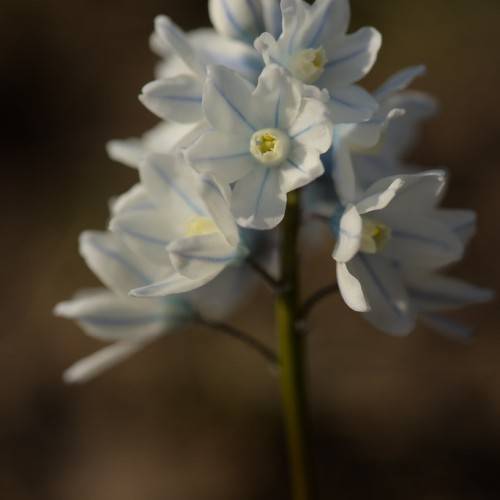
puschkinia
Puschkinia scilloides var. libanotica
Cycle:
Perennial
Watering:
Average
Hardiness Zone:
4 - 8
Flowers:
Flowers
Sun:
Full sun,part shade
Leaf:
Yes
Growth Rate:
Low
Maintenance:
Low
Drought Tolerant:
Yes
Salt Tolerant:
Yes
Care Level:
Medium
watering
Puschkinia should be watered regularly. In the summer, they may need more frequent watering. Water them when the soil starts to dry out or when the leaves become wilted. The best way to tell when the soil is dry is by feeling the soil and seeing if it is crumbly when you touch it. During the warmer months, water them every 5-7 days. During cooler months,water them every 10-14 days. When watering, generously water the soil until it is moist but not soggy. Be sure to empty any excess water from the plant saucer.
sunlight
Puschkinia (Puschkinia scilloides var. libanotica) plants prefer bright, indirect sunlight throughout the day. An ideal spot for your Puschkinia is near a south facing window; however, direct sun should be avoided. During summers, the Puschkinia should receive 6 to 8 hours of light each day, while in winter it should receive 4 to 5 hours. If you are growing your Puschkinia indoors, make sure to rotate it so that it receives light from different directions for a consistent amount of time.
pruning
Puschkinia (Puschkinia scilloides var. libanotica) should be pruned in the early spring, while the plant is still dormant. This species benefits from light pruning to help maintain its desirable shape and keep it healthy. The main stems should be cut back to a height of 8-10 inches (20-25 cm), leaving the more delicate leafy shoots as is. This will prevent the plant from becoming too tall or leggy and will encourage the growth of more compact, healthy foliage. If needed, dead or damaged leaves and stalks should also be removed during this time. After pruning, the soil should be lightly tilled around the plant to promote root growth and fertilize the soil, as Puschkinia is a hungry plant.
